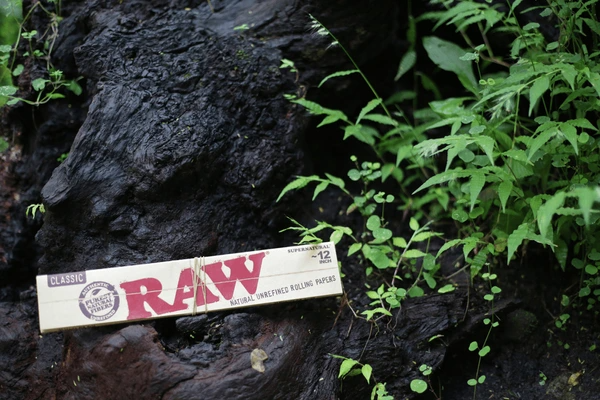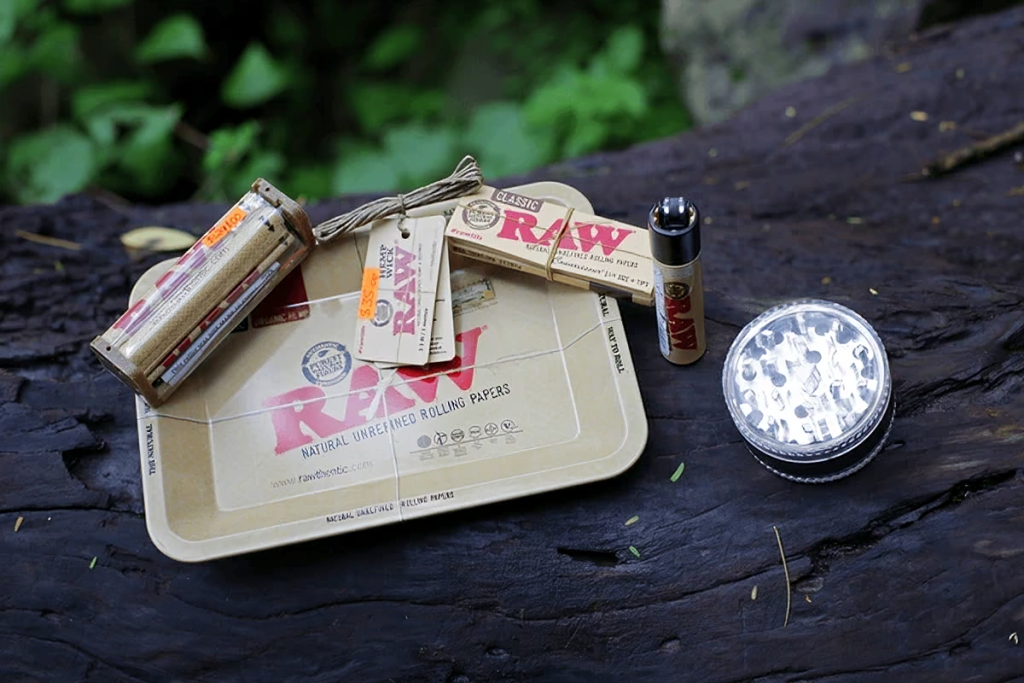For many, rolling paper smoking is synonymous with a relaxed ritual, a way to unwind and savor the experience. However, for the uninitiated, the variety of rolling papers available can be overwhelming.
This blog dives deep into the world of rolling papers, exploring their materials, uses, and how to choose the perfect one for you.
Rolling Papers: An Overview
Rolling papers are thin sheets of specially designed paper used to create cigarettes (by hand or machine) or for rolling herbal blends. Various types of rolling paper come in various sizes, materials, and flavors, offering a customized smoking experience.
History of Rolling Papers
The history of smoking rolling papers stretches back centuries. While the exact origin remains unclear, evidence suggests their use in Europe as early as the 16th century. Spain is often credited with the commercial production of rolling papers in the 1800s, and the iconic Zig-Zag brand emerged in France around the same time. As cigarette smoking gained popularity, rolling papers became a convenient and affordable alternative to pre-made cigarettes.
Rolling Paper Sizes
Choosing the right size rolling paper depends on your preference. Here’s a quick guide:
- Single Wide: Perfect for solo smokers or those who prefer a thinner smoke.
- King Size: A popular choice, offering a longer and more substantial smoke.
- Double Wide: Ideal for sharing or rolling larger joints/cigarettes.
Pro tip: When choosing a size, consider the amount of material you’ll be using and the desired smoking experience.
Different Types of Rolling Paper
Types of rolling papers come in various materials, each impacting the burn, taste, and overall experience. Here are some of the most common:
- Rice Paper: This popular choice offers a slow, clean burn with minimal taste, allowing the natural flavors of your smoking material to shine through.
- Hemp Paper: Made from sustainable hemp fibers, these papers burn slowly and offer a slightly earthy flavor.
- Wood Pulp Paper: The traditional choice, wood pulp papers are readily available and affordable. However, they may have a slight aftertaste compared to other materials.
- Cellulose Paper: Often clear or translucent, these papers offer a unique aesthetic and slow burn.
Pro tip: Experiment with different materials to find one that suits your taste and smoking preference.

What are Rolling Papers Made of?
As mentioned above, rolling papers come in several different forms of materials. Here’s a closer look at what are rolling papers made of:
- Natural Fibers: Rice, hemp, and flax are natural fibers used in rolling paper production. These papers are generally considered more eco-friendly and are preferred by those seeking a clean taste.
- Wood Pulp: A traditional and affordable option, wood pulp papers can be bleached or unbleached. Bleached papers may have a slightly harsher taste.
- Cellulose: Derived from wood pulp, cellulose is a versatile material that can be processed to create clear or translucent rolling papers.
Beyond the paper itself, rolling papers often contain a natural gum adhesive to help seal the roll. This adhesive is usually made from vegetable sources like sugar or Arabic gum.
How to Use Rolling Papers?
In case you are wondering how to use rolling papers, here are the steps you can follow to use rolling papers:
- Grind your material: Ensure your tobacco or herbs are finely ground for a smooth and even smoke.
- Prepare the paper: Place the paper with the adhesive strip facing you.
- Distribute the material: Evenly spread your ground material across the lower half of the paper, leaving some space near the adhesive strip.
- Roll and tuck: Using your thumb and forefinger, gently roll the paper towards the adhesive strip, tucking the material in as you go.
- Seal the roll: Moisten the adhesive strip with a light lick and gently seal the roll by pressing down.
- Pinch and pack (optional): Pinch the top of the roll to ensure a tight pack and even burn.
Remember, practice makes perfect! Numerous online tutorials and resources help you master the art of rolling.
How Old Do You Have to Be to Buy Rolling Papers?
The legal age to purchase rolling papers varies depending on your location. In many countries, the minimum age is 18, but it can be higher in some regions. Always check your local laws before purchasing rolling papers. How old do you have to be to buy rolling papers is a crucial consideration for the smoking experience.
Flavoured Rolling Papers. What’s that?
Flavored rolling papers are a recent innovation that adds a touch of sweetness or other flavors to your smoking experience. These papers come in various flavors, from fruit and candy to mint and chocolate.
While some enjoy the novelty, flavored papers can mask the natural taste of your smoking material. Additionally, some concerns exist regarding the safety of inhaling flavored additives during smoking.
Top Rolling Paper Brands (Zig-Zag, Raw, Smoking, and Elements)
With so many brands on the market, choosing the right rolling paper can be daunting.
Here’s a quick overview of some popular options:
- Zig-Zag: A classic brand known for its affordable, bleached white papers. Zig-Zag offers a variety of sizes and is a great choice for beginners.
- RAW: Popular for its unbleached, natural hemp papers, RAW offers a slow burn and a clean taste. They also have a wide range of specialty papers, including organic and flavored options.
- Smoking: Another established brand, Smoking, offers a variety of paper types and sizes, including cellulose and rice paper. It is known for its consistent quality and ease of use.
- Elements: This brand focuses on ultra-thin rice papers designed for a pure and clean smoking experience. Elements’ papers are a favorite among those who prioritize taste and slow burning.
Remember, this is not an exhaustive list; many other excellent brands offer unique rolling paper experiences.
Choose the Rolling Paper that feels right!
There’s no single “best” rolling paper. The right choice depends on your personal preferences and smoking habits. For that, you must consider these factors:
- Material: Do you prefer a natural taste (rice or hemp) or a classic feel (wood pulp)?
- Size: How much material will you use, and do you prefer a shorter or longer smoke?
- Burn rate: Do you want a slow, even burn (rice or hemp) or a faster burn (wood pulp)?
- Flavor: Are you looking for a clean taste or a touch of sweetness (flavored papers)?
- Budget: Rolling papers range in price depending on brand and material.
Don’t be afraid to experiment! Try different brands, sizes, and materials to find the rolling paper that elevates your smoking experience.
Bottom Line
Rolling papers can be a ritualistic and enjoyable experience. You can create a personalized and satisfying smoke by understanding the different types of papers available and how to use them.
Remember, legality and health risks associated with rolling paper smoking are important considerations.
Visit Nichut today and enrich your smoking experience with different types of rolling papers.




